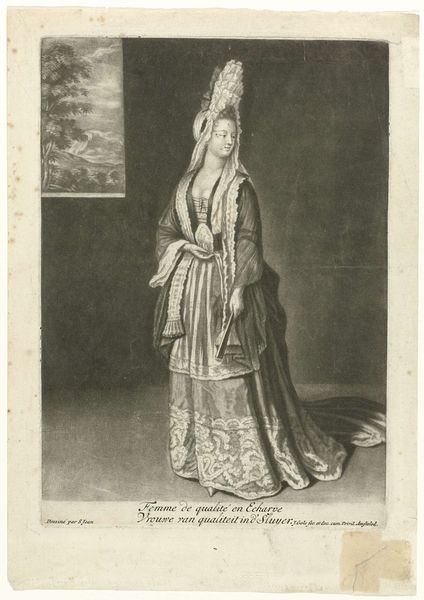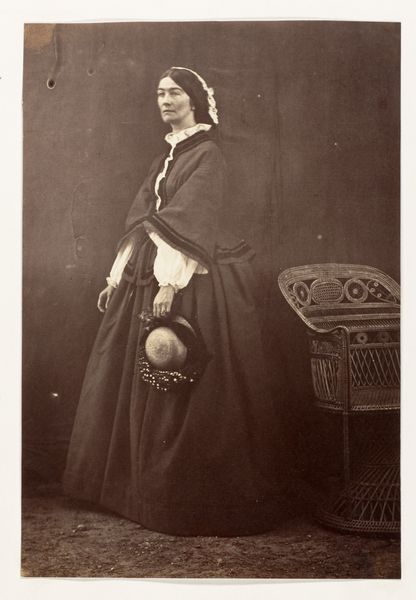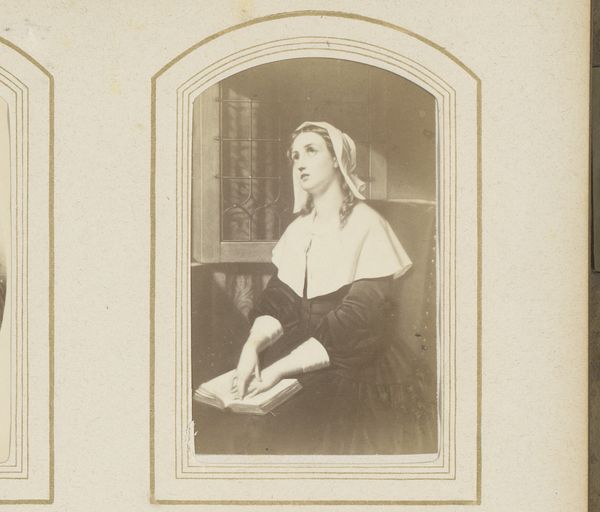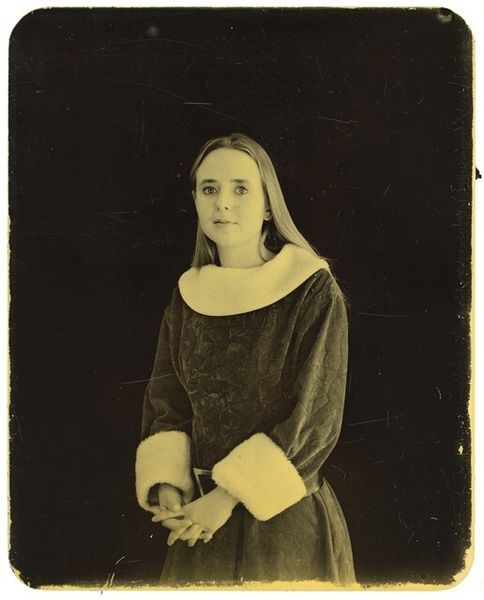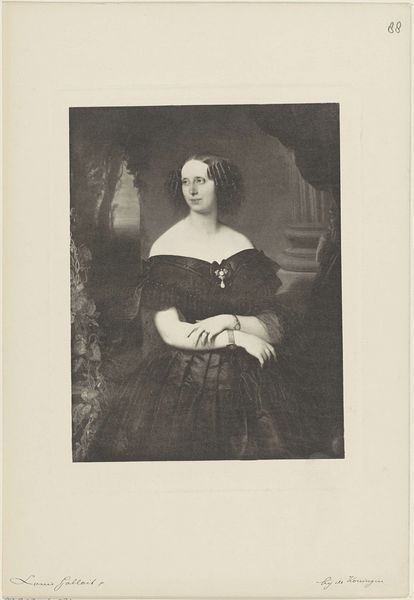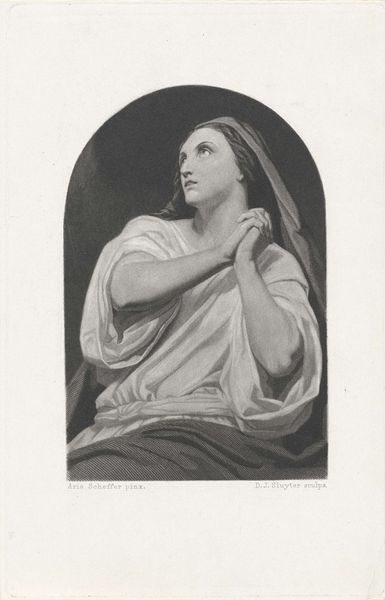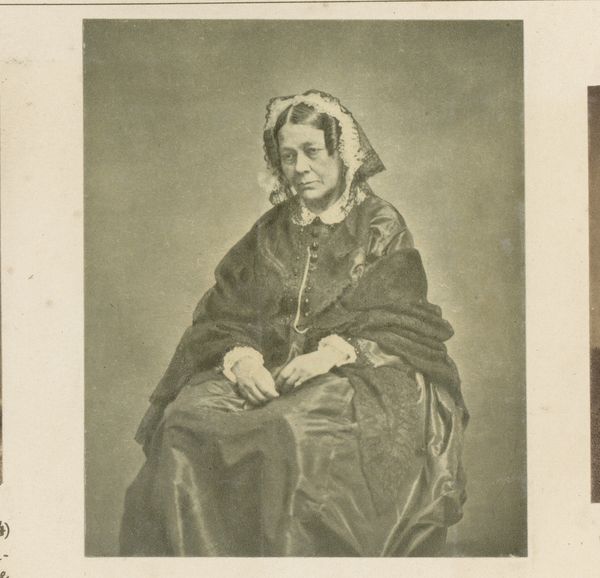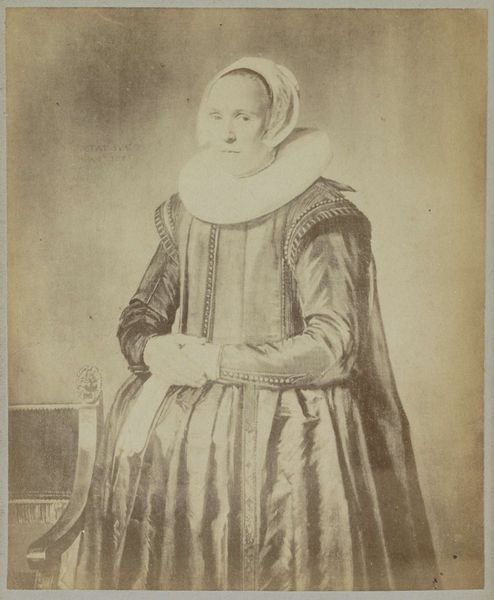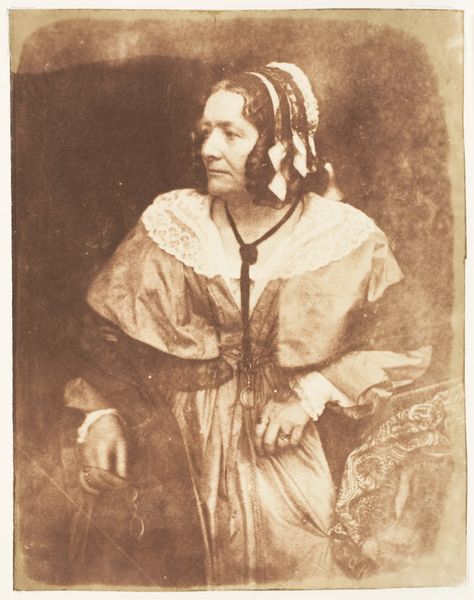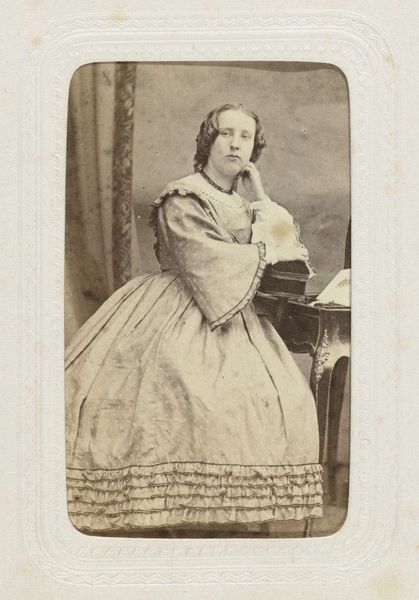
Fotoreproductie van (vermoedelijk) een prent van een biddende vrouw bij een open raam c. 1850 - 1870
0:00
0:00
anonymous
Rijksmuseum
Dimensions: height 124 mm, width 89 mm
Copyright: Rijks Museum: Open Domain
Editor: This photograph, dating from about 1850 to 1870, is called "Fotoreproductie van (vermoedelijk) een prent van een biddende vrouw bij een open raam"—it’s in the Rijksmuseum. The material is a gelatin-silver print, giving it a sepia tone. There's a solemn feel to the image. How do you interpret this work, especially given its medium? Curator: What strikes me is how the gelatin-silver print medium itself relates to the image's message. Consider the mass production inherent in photographic reproduction at that time. The image, a reproduction *of* a print *of* a woman praying, loses the unique handmade quality associated with traditional devotional images. Doesn't that speak volumes about the changing nature of faith and its accessibility within a rapidly industrializing society? The act of piety is almost…manufactured. Editor: So, you're saying the photograph, as a mass-produced object, cheapens the subject's supposed devotion? Is it like, manufactured authenticity? Curator: Precisely! The choice of a photographic process also democratizes image consumption. Previously, this kind of imagery would've been limited to a wealthier patronage; now, through these methods, these ideals were circulated within a broader society, influencing behavioral norms of that period. Consider the socio-economic context and the labour involved in its creation and distribution. Was this labour primarily gendered? That is the real question, I think. Editor: I hadn't thought of it that way! It is fascinating how the materiality and method of reproduction recontextualize the image's message about faith. Curator: Absolutely. Examining the material production is essential; it allows us to see the work as a product of its time and, therefore, an active participant in the social landscape.
Comments
No comments
Be the first to comment and join the conversation on the ultimate creative platform.
